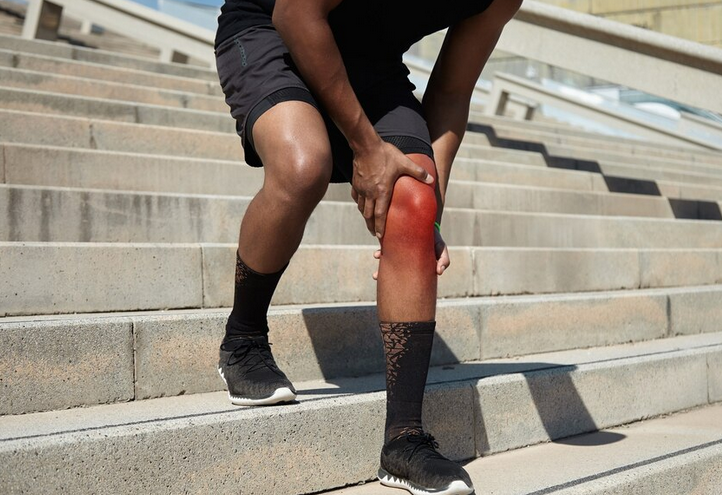

Joint pain is a common issue that can affect people of all ages. Whether it's a dull ache or sharp discomfort, joint pain can interfere with daily activities and overall quality of life.
According to WebMD, joints form the connections between bones in places such as your knees, elbows, shoulders and hips.
They provide support and help you move.
This means that any damage to the joints from disease or injury can interfere with your movement and cause pain.
In 2003, Dr. Mirza Rahman Beg, Consultant Orthopaedic Surgeon, Associate Professor and Chief of Orthopaedics at Aga Khan University Hospital (AKUH), defined a joint and its role.
"A joint is formed when the ends of two bones come together. Friction is reduced by the smooth cartilage that lines the bone ends. The joint also secretes oily fluid, which further reduces the joint friction,” she said.
“Any condition, be it a disease or an injury, which destroys this smooth cartilage will lead to pain and joint stiffness.”
You are most likely to experience joint pains in the knees, hips, spine, hands and feet.
Causes of joint pain
Painful joints can be caused by a wide range of conditions.
Cleveland Clinic lists some of the causes as:
Osteoarthritis
This is a common type of arthritis which occurs when your cartilage – the protective cushion between your bones – wears away.
This causes your joints to be painful and stiff.
Osteoarthritis develops slowly and usually occurs after age 45.
Rheumatoid arthritis (RA)
The Aga Khan University Hospital defines RA as a special type of arthritis mainly involving the small joints in your hands and feet. It is a chronic (long-term) disease.
“The age of onset is between 20 to 40 years of age, although the 'juvenile' variant does occur in children,” the hospital says.
“Women are three times more likely to deal with Rheumatoid, and there may be a hereditary component.”
Gout
Cleveland Clinic states that gout is a painful condition where acidic crystals from your body collect in your joint, causing severe pain and swelling.
This usually occurs in your big toe.
Bursitis
This is the inflammation of the fluid-filled pads (bursae) that act as cushions at the joints.
Bursitis occurs most often at joints that perform frequent, repetitive motion.
It’s usually found in your hip, knee, elbow or shoulder.
Tendinitis
Tendinitis is inflammation of your tendons — the flexible bands that connect bone and muscle.
It’s typically seen in your elbow, heel or shoulder. Overuse often causes it.
Other causes include viral infections, rash or fever, which may make joint movement painful.
Additionally, injuries, such as broken bones or sprains, can also cause joint pain.
Risk factors for joint pain
Cleveland Clinic says joint pain tends to affect people who have arthritis or other long-term medical conditions, previous injuries to a joint, or repeatedly used and/or overused a muscle.
Other factors are depression, anxiety and/or stress.
Further, overweight (having a body mass index greater than 25) or obesity (having a BMI greater than 30).
The Clinic adds that age is also a factor in stiff and painful joints.
“After years of use and wear and tear on your joints, problems may arise after age 45,” it says.
Joint pain treatments
At home remedies
When having joint pain, you can apply a heating pad or ice onto the affected area for short periods, several times a day.
Soaking in a warm bathtub may also offer relief.
Exercise
Exercise can help get back strength and function.
Walking, swimming, or another low-impact aerobic exercise is best.
The Clinic advises people who participate in strenuous workouts or sports activities to scale it back or begin a low-impact workout routine.
Gentle stretching exercises will also help.
Medication
You can use nonsteroidal anti-inflammatory drugs (NSAIDs) to ease your pain.
If you have a history of stomach ulcers, kidney disease or liver disease, check with your provider to see if this is a good option for you.
Topical treatments
A doctor may recommend topical treatments like ointments or gels that you can rub into your skin over the affected joint area to help ease pain.
You may find some of these over the counter, or your provider may write a prescription.
Dietary supplements
Dietary supplements like glucosamine may help relieve pain.
Other relief methods are weight loss, getting a massage, taking a warm bath, stretching frequently and getting adequate rest.








![[PHOTOS] Gachagua warm reception in Nyandarua](/_next/image?url=https%3A%2F%2Fcdn.radioafrica.digital%2Fimage%2F2025%2F04%2Fc2a8c64d-5577-4768-a0ac-513c8876c288.jpeg&w=3840&q=100)


